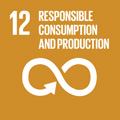- Docente: Sanzio Candeletti
- Credits: 6
- SSD: BIO/14
- Language: Italian
- Moduli: Sanzio Candeletti (Modulo 1) Laura Rullo (Modulo 2)
- Teaching Mode: In-person learning (entirely or partially) (Modulo 1); In-person learning (entirely or partially) (Modulo 2)
- Campus: Bologna
- Corso: First cycle degree programme (L) in Applied Pharmaceutical Sciences (cod. 8518)
-
from Oct 01, 2024 to Oct 22, 2024
-
from Oct 23, 2024 to Nov 13, 2024
Learning outcomes
At the end of the course the student has the basic knowledge of the mechanisms that regulate the kinetics of a drug in the body as well as the drug interactions with the biological targets responsible for its activity. In particular, the student: - knows the essential pharmacokinetic elements, - understands the general bases of biotransformation, - knows how drugs interact with their biological targets and the biological outcomes of these interactions.
Course contents
The Course of Pharmacology I is made up by two parts (modules) covering the principles of General Pharmacology:
Pharmacodynamics (Module 1) and Pharmacokinetics (Module 2).
Program Module 1 - Pharmacodynamics
Pharmacodymamics: sites and mechanisms of actions of drugs; drug-receptor interactions and their cellular consequences; dose-response relationships; drugs acting as agonists, antagonists or partial agonists; factors modifying drug actions (e.g. age, pathologies, drug interactions, tolerance, placebo). Drug interactions. General Toxicity: adverse effects; overdose effects; idiosyncratic or allergic reactions; abuse liability. Preclinical and clinical drug development. Pharmacovigilance.
Program Module 1 - Pharmacokinetics
General principles about transfer of drugs across membranes for drug absorption. Administration routes and drug absorption. Distribution: volume of distribution, binding to plasma proteins. Biotransformations: phase 1 and phase 2 reactions; biotransformations outside the liver; pharmacometabolic induction and inhibition. Drug excretion. Pharmacokinetic parameters (clearance, half-life, single or repeated administrations, bioavailability). Individual variability in responding to drugs (age, ethnicity, pregnancy, disease, pharmacologic interactions).
Readings/Bibliography
Rang & Dale Farmacologia; Edra, 2016
Govoni S. et al., "Farmacologia", Casa Editrice Ambrosiana, 2024
FURLANUT - Farmacologia Generale e Clinica per le Lauree Sanitarie, III Edizione – Ed. Piccin
RD. HOWLAND, MJ. MYCEK - Le basi della farmacologia. - Edizioni Zanichelli
F. Clementi, G. Fumagalli, "Farmacologia Generale e Molecolare", CEA, 2018
Katzung BG, "Farmacologia Generale e clinica", 11th Ed. Piccin.
Teaching methods
Oral lessons
Assessment methods
The learning assessment of the Pharmacology I Course is done through an oral exam on each of the two teaching modules (taken on the same or on different dates), which aims to verify and evaluate the achievement of the learning objectives.
For Module I, the following is required: knowledge of the pharmacokinetic processes that govern the presence of the drug in the body, from its entry to its elimination.
For Module II, the following is required: knowledge of the principles of the mechanism of action of drugs, the characteristics and pharmacodynamic consequences of their interaction with the biological structures responsible for their therapeutic / toxic effects, as well as their variability.
The final grade of the Pharmacology I Course is defined by the average of the evaluation of the answers to the exam interviews of each of the two modules (taken on the same or on different dates).
Since the Pharmacology I Course is integrated (I.C.) with the Pharmacology II Course, it is necessary to take and pass the two exams according to their sequence, on separate dates or on the same date.
Teaching tools
Oral lessons will be given with the aid of multimedial tools (MS Power Point presentations, etc.).
Office hours
See the website of Sanzio Candeletti
See the website of Laura Rullo
SDGs


This teaching activity contributes to the achievement of the Sustainable Development Goals of the UN 2030 Agenda.
